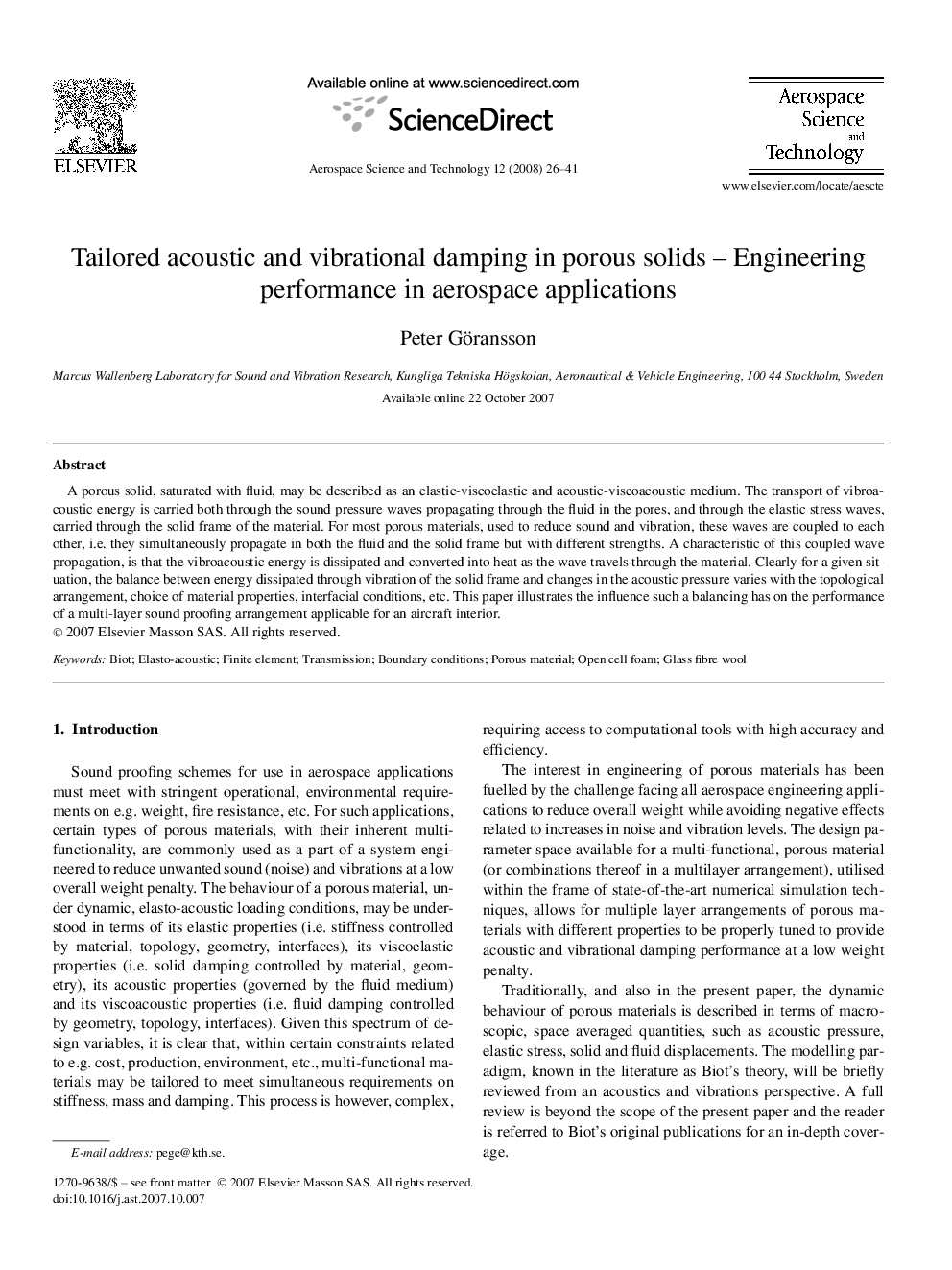| Article ID | Journal | Published Year | Pages | File Type |
|---|---|---|---|---|
| 1718906 | Aerospace Science and Technology | 2008 | 16 Pages |
A porous solid, saturated with fluid, may be described as an elastic-viscoelastic and acoustic-viscoacoustic medium. The transport of vibroacoustic energy is carried both through the sound pressure waves propagating through the fluid in the pores, and through the elastic stress waves, carried through the solid frame of the material. For most porous materials, used to reduce sound and vibration, these waves are coupled to each other, i.e. they simultaneously propagate in both the fluid and the solid frame but with different strengths. A characteristic of this coupled wave propagation, is that the vibroacoustic energy is dissipated and converted into heat as the wave travels through the material. Clearly for a given situation, the balance between energy dissipated through vibration of the solid frame and changes in the acoustic pressure varies with the topological arrangement, choice of material properties, interfacial conditions, etc. This paper illustrates the influence such a balancing has on the performance of a multi-layer sound proofing arrangement applicable for an aircraft interior.
